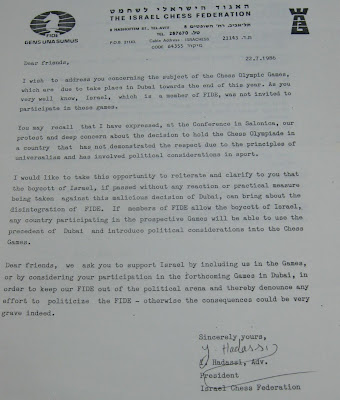Photo Credit: A. P. ; courtesy of Beit Ha'Sachmat, Tel Aviv.
As the Hebrew text in the picture says, the above leather mobile chess set had been given by Miguel Najdorf to Eliezer Pe'er in 1961, presumably during Najdorf's visit to Israel. It now hangs in Beit Ha'Sachmat (the "Chess House") the Israeli Chess Federation's headquarters in 26 Tagor St., Tel Aviv. (Link in Hebrew).
Naturally, the position on the board is the opening position of the Sicilian Defense, Najdorf Variation (5. ... a6).



